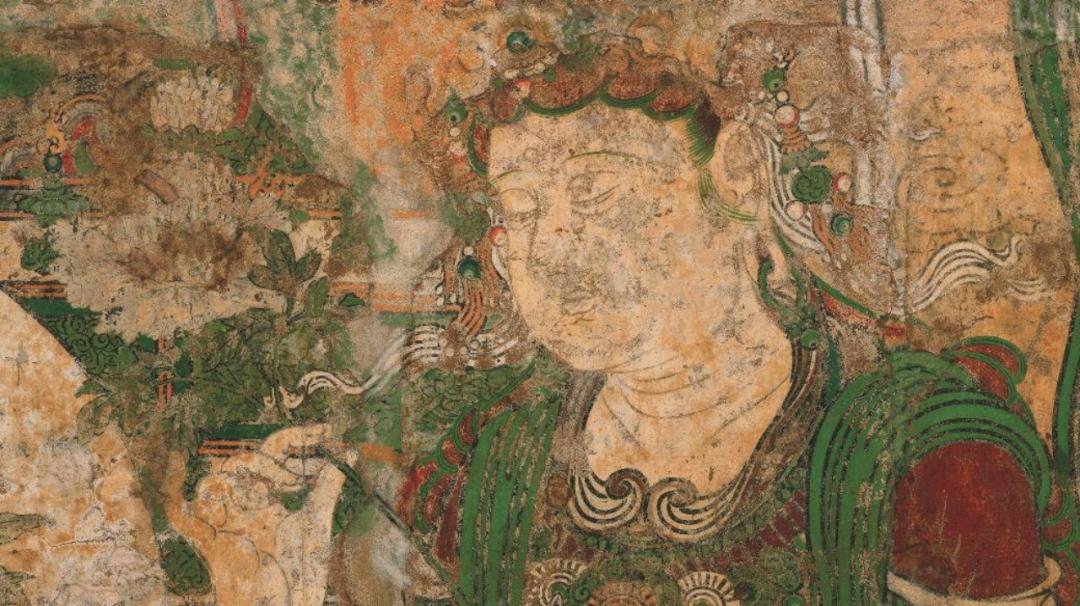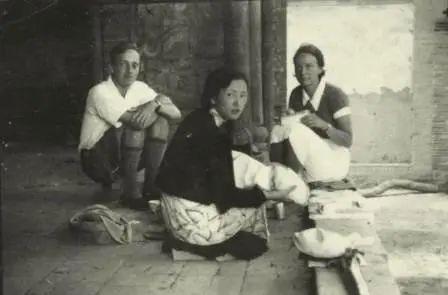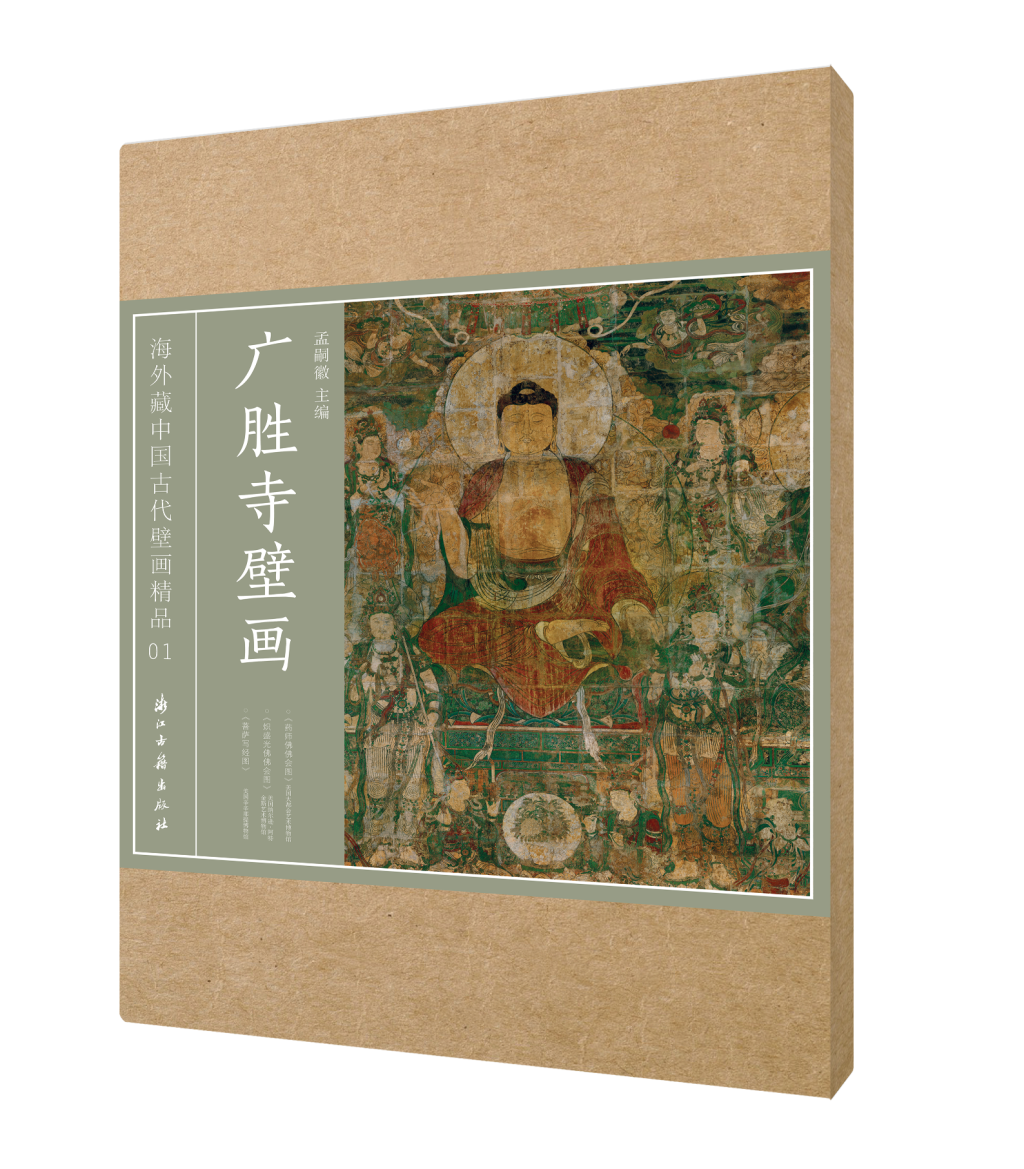
Almost every visitor who enters the Sackler Wing of the Metropolitan Museum of Art in New York is captivated by the massive mural of the Medicine Buddha. Measuring 755.9 cm tall and 1514.8 cm long, its splendor, nearly covering the entire wall, invites one to step lightly. Its original home was Guangsheng Temple in Hongdong County, Shanxi Province. Together with its dispersed sister works, this mural tells the story of the rise and fall of the murals of southern Shanxi temples.
On October 22, the five-day "2025 International Academic Conference on Southern Shanxi Murals" concluded in Shanxi. During the conference, dozens of experts and scholars visited Guangsheng Temple for a field trip. Meng Sihui, a researcher at the Palace Museum, was interviewed by The Paper.
The "Medicine Buddha Assembly" painting in the Sackler Hall of the Metropolitan Museum of Art in New York is one of the largest ancient Chinese temple murals surviving overseas. It is presumed to have originally been located on the east gable of the main hall of the lower sanctuary of Guangsheng Temple. The main figure depicted is Medicine Buddha, flanked by the Bodhisattvas Manjusri and Avalokitesvara, forming a "Buddha Triad." Surrounding him are the eight great bodhisattvas: Sunlight Peranakan, Chandra Peranakan, Bhaisajyaguru, and Bhaisajyaguru. Flanking the eight great bodhisattvas are Medicine Buddha's twelve divine generals, six on each side.

"Medicine Buddha Assembly" in the Sackler Room of the Metropolitan Museum of Art, New York

The Medicine Buddha Assembly in the Metropolitan Museum of Art, New York, shows a person offering flowers below the Medicine Buddha.
Standing in front of the now empty main hall of the lower temple of Guangsheng Temple in Hongdong, Shanxi, Meng Sihui, a researcher at the Palace Museum, gave a live narration that drew people's attention back to nearly a hundred years ago.

In the 1920s, Guangsheng Temple was in a state of disrepair. Several antique dealers visited the temple and saw the magnificent murals there. They discussed buying them with the monks. Monk Zhenda was worried about raising funds to repair the temple. After hearing this proposal, he decided to "give up the temple to save the temple" and eventually sold the murals for 1,600 silver dollars. Under the eaves of the east wing in the backyard of the lower temple of Guangsheng Temple, there is still a stele engraved in 1929 with the title "Record of the Reconstruction of the Buddhist Temple of Guangsheng Lower Temple", which records the process of selling the murals. According to relevant documents, in the summer of 1934, Liang Sicheng, Lin Huiyin, John King Fairbank, and Wilma Canon Fairbank, a group of scholars who visited southern Shanxi, also noticed the incomplete murals in the main hall of the lower temple of Guangsheng Temple. Liang and Lin wrote in their investigation notes "A Brief Preliminary Investigation of Ancient Buildings in Jinfen":
"There's still a small mural on the elephant's eye wall at the east mountain peak, with beautiful images and colors. It's said that in the 16th year of the Republic of China, the monks of the temple sold the murals on both sides to an antique dealer and used the proceeds to repair the temple."

John King Fairbank, Lin Huiyin, and Weime Fei at Guangsheng Temple in 1934 (Photo by Liang Sicheng)
Many details of the Guangsheng Temple murals, including how they were stripped and sold, and how they ended up overseas, are now impossible to reconstruct. It is speculated that most of them were sold internationally by antique dealers such as Lu Qinzhai, acquired by collectors, or donated, ultimately ending up in major museums and art galleries. Currently, the lost southern Shanxi murals are primarily housed in museums in the United States and Canada. Among them, two Yuan Dynasty murals from the lower sanctuary of Guangsheng Temple—"The Assembly of the Buddha of Immeasurable Light" and "The Assembly of the Buddha of Medicine"—are now treasured by the Nelson-Atkins Museum of Art and the Metropolitan Museum of Art in New York, respectively.

The mural "Assembly of the Buddha of Incomparable Light" from the Guangsheng Temple in the collection of the Nelson-Atkins Museum of Art
The stylistic similarities among these dispersed murals attracted the attention of early overseas Chinese art historians. Lawrence Scholmen of the Nelson-Atkins Museum of Art in the United States first proposed the concept of the "Jinfen School of Painting and Sculpture." In 1987, Professor Xia Nanxi of the University of Pennsylvania formally proposed the concept of the "Jinnan Temple Mural Group." This concept was further deepened and refined by Meng Sihui in his 2011 book, "A Study of the Jinnan Temple Mural Group in the Yuan Dynasty."
"We call it a mural complex because it's related to a team of painters," Meng Sihui emphasized in an interview with The Paper at Guangsheng Temple. "The head painter of this team is called Zhu Haogu."
Legend of the Painter: Zhu Haogu and the Artistic Achievements of the Southern Shanxi School of Painting
In the history of traditional Chinese art, where literati painting dominated, folk painters were rarely recorded in official historical records. However, Zhu Haogu and his team of painters were an exception—they were the only group of painters in Pingyang Prefecture in southern Shanxi to be recorded in the "Pingyang Prefecture Chronicle" and the "Shanxi General Chronicle."
"Although the record is brief, it's a rare achievement for a folk painting group to be recorded in historical records," said Meng Sihui. Zhu Haogu, a native of Xiangling in southern Shanxi during the Yuan Dynasty, led a painting group that left behind numerous artistic treasures in southern Shanxi, including the famous murals at Yongle Palace and Xinghua Temple.

Shanxi Yongle Palace murals
Through a careful analysis of existing painters' inscriptions on the murals and a comparison of murals from various temples and monasteries in southern Shanxi with those in the Sanqing Hall of the Yongle Palace, Meng Sihui discovered that they all used the same powder model as a reference. He inferred that the murals were created by the Zhu Haogu painting team and their descendants. The works of the Zhu Haogu school feature rigorous composition, dignified and full-bodied figure modeling, and concise and smooth lines in clothing, imbued with a sense of rhythm and expressive power. Their artistic achievements hold a significant place in the history of Chinese art.
Disaster and Faith: The Historical Context of the Mural Theme
Guangsheng Temple is no ordinary temple; it holds a high position as the "Central Town" of the "Three Mountains and Five Towns" where ancient emperors held ceremonies. The "Five Towns" served to protect a region, supplementing the areas not covered by the "Five Sacred Mountains." The Central Town, Huoshan, was primarily responsible for important ceremonies such as the emperor's change of reign title, birthday celebrations, coronations, weddings, and sacrifices.
In 1303, the seventh year of the Yuan Dynasty's Dade reign, a magnitude 8 earthquake with an intensity of 11 struck this area, comparable to the Wenchuan earthquake. Aftershocks continued for six years. According to Meng Sihui, the imperial court recorded two large-scale sacrificial ceremonies at the time. After the first ceremony, Ping'an Prefecture was renamed Jinning Road in the hope that the earthquakes would cease.

The Pingyang Prefecture mural "Chao Yuan Tu" was lost in Canada
This history of disasters directly influenced the choice of subject matter for the Guangsheng Temple murals. "We've discovered three temples here with this combination. The Medicine Buddha is depicted in as many as 97 Dunhuang murals, and most of them are paired with sutras such as Amitabha and Amitayus," said Meng Sihui during a speech at the 2025 Jinnan Mural International Academic Conference. "While the Medicine Buddha's Pure Land is always paired with the Western Pure Land, only Guangsheng Temple features both the Buddha and the Medicine Buddha, which is closely related to the local disaster history."
The Buddha of Incomparable Light is responsible for eliminating or alleviating celestial disasters, while the Buddha of Medicine is responsible for alleviating human suffering. The unique combination of these two Buddha images reflects the strong desire of local monks and lay people to pray for the abolition of disasters and calamities, and is a unique combination of religious belief and artistic creation in a specific historical context.

"Medicine Buddha Assembly" from the Metropolitan Museum of Art
From cultural dispersal to the main venue of academic research
The study of Chinese murals began in a dramatic way: overseas. In the 1920s, a large number of murals from southern Shanxi, including those from Guangsheng Temple, were exported overseas, attracting the attention of the international art community and ushering in research in this field.
According to research, Lu Qinzhai sold the two smaller Ming Dynasty parts of the Guangsheng Temple murals to the University of Pennsylvania Museum in 1929; in 1932, he sold another huge Yuan Dynasty mural to the Nelson-Atkins Museum of American Art; and the most valuable Yuan Dynasty giant painting currently in the Metropolitan Museum of Art was not sold until 1954 to American collector Sackler, who donated it to the Metropolitan Museum of Art in 1964 in the name of his parents.
"After 1949, it became impossible for our country's cultural relics to be lost abroad. As overseas research on Chinese cultural relics gradually waned, the focus of research shifted to our country," said Meng Sihui. The convening of the "2025 International Academic Conference on Southern Shanxi Murals" also marks the return of this research focus. The conference brought together numerous scholars from home and abroad, forming a collaborative research force that will undoubtedly play a significant role in promoting and deepening the academic research on Southern Shanxi murals.
The "Symposium on Ancient Visual and Material Culture in Southeast Shanxi" held at the University of Chicago Beijing Center in 2023 and the "International Academic Conference on Southern Shanxi Murals" held at the Hubei Institute of Fine Arts in 2025 are reportedly drawing attention to the regional cultural differences within Shanxi. Meng Sihui used the classic Shanxi folk song, "People say Shanxi is beautiful. With my left hand I point to the Taihang Mountains, and with my right hand I point to Lüliang," to vividly illustrate Shanxi's characteristic topography of "two mountains sandwiched by a river." The plains between the Taihang and Lüliang Mountains have formed multiple basins, each of which has developed unique folk customs and artistic characteristics.

Maitreya Preaching Picture, from the collection of the Ontario Museum, Canada
Today, standing before the empty walls of Guangsheng Temple, it's hard to imagine the magnificent spectacle of a wall once covered in murals. However, through the efforts of a series of scholars, these murals, which were scattered overseas, are now making a "return" in academic research in another form.

The Pingyang Prefecture mural "Chao Yuan Tu" was lost in Canada
